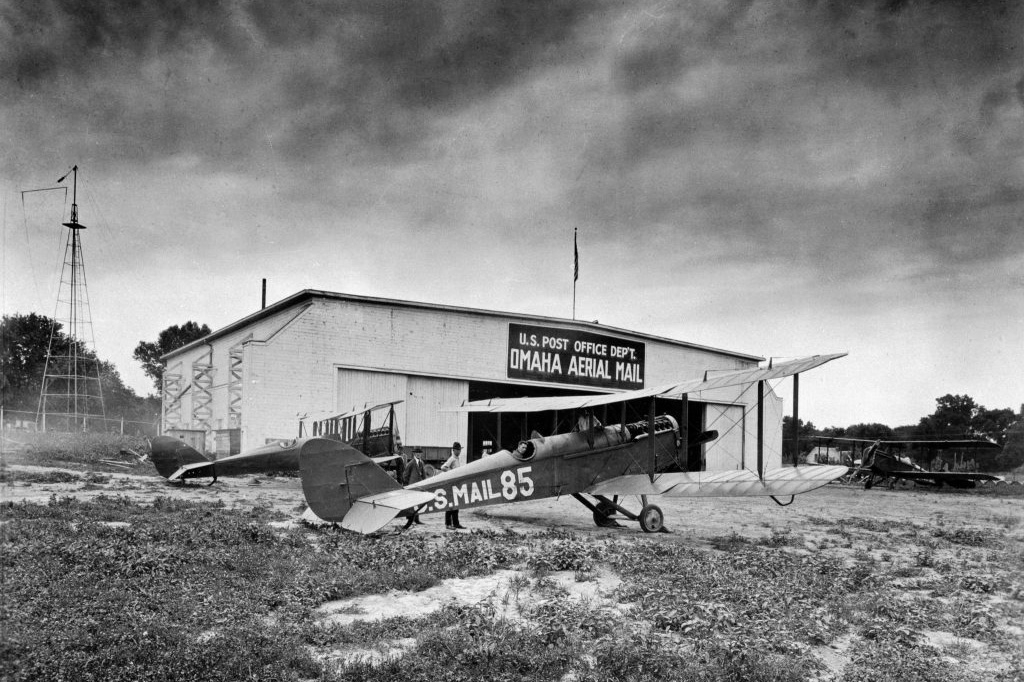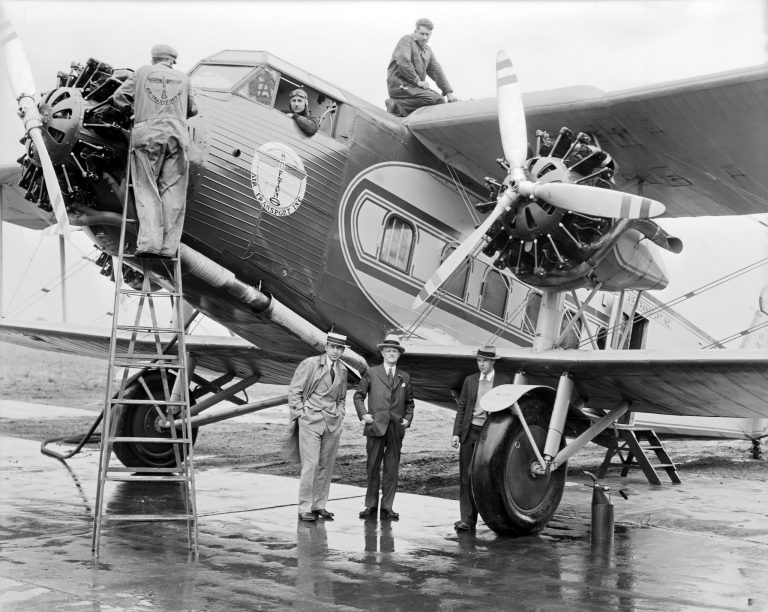
By History Nebraska
Early airmail pilots flew open-cockpit biplanes, navigated by landmarks and simple maps, and landed in grassy airfields. By 1930 their facilities and technology had changed dramatically. What seems quaint in hindsight was in fact a time of rapid change.
Airmail service began in 1918. The first route was between Washington, D.C., and New York City. Regular coast-to-coast airmail flights began in 1920.
Nebraska’s first airfields along the coast-to-coast route were in North Platte and Omaha. Airmail pilots used Omaha’s Ak-Sar-Ben Field (near the famous racetrack) until 1924, when the Air Mail Service moved its operations to Offutt Field at Fort Crook. Offutt Field was literally a field in those days – no paved runways – and the army did little flying at the time.
The de Havilland DH-4 was the standard airmail plane during the early years. It began as a British two-seat light bomber during World War I. Modified as an airmail plane, the pilot sat in the rear cockpit, while the front cockpit was enclosed to hold the mailbags.

Pilots navigated with simple maps and followed landmarks such as railroads and rivers. The Platte River Valley has long been a preferred land route across Nebraska. Now it became an aerial highway.
Forced landings and crashes were common, and pilots were vulnerable to changes in weather. Fog was especially deadly. Then as now, pilots had to see the ground in order to land safely. They often carried flares to drop. That at least marked ground level.
Nebraska’s first airmail fatality occurred near Marquette in 1928 when a pilot crashed into a tree. He had been flying low to avoid headwinds. The pilot survived, but he was carrying a passenger who did not.

Night flying added other risks. The Post Office staged its first coast-to-coast round-the-clock flight on Feb. 22-23, 1921. Pilot Jack Knight flew in darkness from North Platte to Chicago, following bonfires along the way. When the Post Office began regular overnight flying in 1924, beacon lights marked the route’s emergency landing fields.
Radio was another exciting new technology. Experiments with two-way radios aboard airmail planes began roughly the same time that consumers were starting to buy radio receivers for their homes. In December 1923, Jack Knight and a government radio engineer kept in touch with Omaha for 100 miles, and checked in while passing Mead and Grand Island. But it took several more years for radio to become common on airmail planes.
This early era was brief. Boeing Air Transport (today’s United Airlines) took over airmail flights in 1927. Three years later, Boeing began carrying both mail and passengers in its new tri-motor Model 80, a big metal-clad biplane with an enclosed, leather-upholstered cabin in which a stewardess attended to passengers’ needs. In just 10 years, much of what we take for granted in aviation had gone from novelty to a way of life.
Based on Kathleen Alonso, “Trail above the Plains: Flying the Airmail through Nebraska from 1920 to 1930,” Nebraska History (Winter 2018). See history.nebraska.gov.
